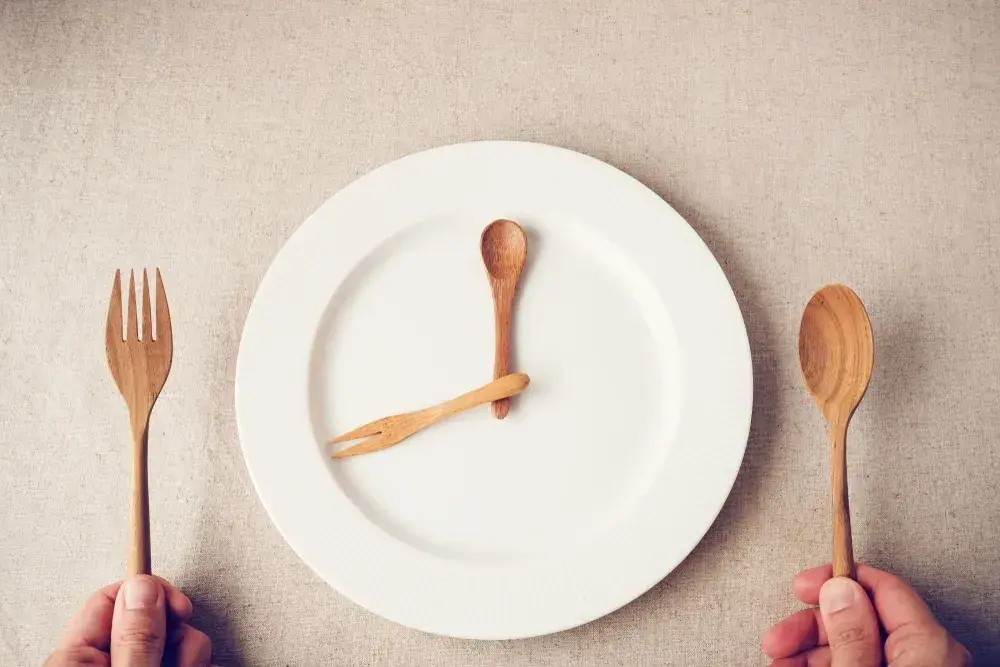
/assets/images/provider/photos/2579242.jpg)
Interesting in trying a fasting diet? Studies show that periodic fasting is associated with numerous benefits, including weight loss, cellular rejuvenation, reduced inflammation, lower blood pressure, and increased energy. Making fasting a regular part of your routine could lower your risk of disease and even extend your lifespan.
But before you dive into the world of fasting, make sure you know what to expect and how to prepare — not just so your fast is safe, but also so you get the best results.
Decide what type of fasting is best for you
Recent research has revealed that different approaches to fasting can all yield significant health improvements. It isn’t necessary to go completely without food to experience the benefits of a fast. Options such as time-restricted feeding, intermittent fasting, and fasting mimicking diets make it easy to find an approach that fits into your lifestyle.
Time-restricted feeding
Time-restricted feeding, or time-restricted eating, refers to the practice of eating all of your food within a certain time period — typically within an 8-hour window. You may also see this referred to as 16/8 intermittent fasting. With practice, some people may opt to reduce their feeding window to an even shorter window.
Time-restricted eating has been found to promote numerous positive effects throughout the body, including weight loss, reduced inflammation, and improved insulin sensitivity. In a study of 156 adults who limited their eating time to a 10-hour window for 16 weeks, participants lost up to 4% of their body weight and maintained this weight loss for a year. They also reported sleeping better at night and having more energy during the day.
The idea behind time-restricted eating is that you give your body more time to rest between meals, which allows your body to devote more energy to detoxification and cellular repair.
Studies even show that you can benefit from time-restricted feeding without changing your diet or reducing your caloric intake, although you will likely experience better results if you follow a healthy diet low in processed foods and high in anti-inflammatory fruits and vegetables.
If you’re new to time-restricted feeding, start with a 12-hour fasting period — such as 8pm to 8am — and gradually reduce your eating period as you become acclimated. Although technically your fast ends whenever you eat or drink anything other than water, some people allow themselves a cup of coffee in the morning, but avoid cream, sugar, or any artificial sweeteners. As a general rule, your body will remain in a fasted state if you drink something containing fewer than 50 calories.
Intermittent fasting
Intermittent fasting involves reducing your caloric intake on non-consecutive days during the week. For example, you could eat your regular diet throughout most of the week, and eat less food on Tuesdays and Thursdays. This is also often referred to as the 5:2 diet. On fasting days, food should be limited to roughly 500 calories for women or 600 calories for men.
As with time-restricted feeding, intermittent fasting has been shown to promote positive health changes, even if you follow your regular diet the rest of the time. But the diet must be continued for results to last. Foods consumed on fasting days should be whole foods that are easy to digest, such as vegetables, berries, lean meats, or vegetable soups. Avoid dairy products, grains, sugar, and processed foods.
Prolonged fasting
Perhaps the most arduous method of fasting is prolonged fasting, which involves reducing caloric intake for at least five consecutive days. Cell biologist Valter Longer, director of the Longevity Institute at the University of Southern California’s School of Gerontology and author of The Longevity Diet, states that prolonged fasting triggers stem cell rejuvenation and autophagy — a process in which aging or damaged cells are destroyed, making space for new, healthy cells to grow. Autophagy has been described as having “a key role in preventing diseases such as cancer, neurodegeneration, cardiomyopathy, diabetes, liver disease, autoimmune diseases and infections.”
As with intermittent fasting, during the fasting period your diet should consist of whole foods that are easy to digest, such as vegetables, leafy greens, and berries. Healthy sources of fat, such as nuts and olives, can help curb feelings of hunger.
To make it easier for people to experience the benefits of a prolonged fast on their own, Longo has developed the ProLon fasting mimicking diet. The ProLon meal kit includes everything you need for a five-day prolonged fast, including nut bars, vegetable soups, snacks, teas, and concentrated electrolyte beverages to help mitigate side effects. Clinical trials using the ProLon diet found that it promoted improved metabolic health, cellular regeneration, and weight loss.
Things to keep in mind when fasting
- Although you can experience benefits from fasting while continuing to eat whatever you want during non-fasting periods, you will experience the best results and the greatest improvements to your overall health if your regular diet is based on healthy, whole foods. Limit your consumption of processed foods, refined carbohydrates, artificial sweeteners, and other foods containing artificial ingredients.
- You may experience some unpleasant side effects when you first start fasting, especially if your diet currently contains a lot of sugar and processed foods. It’s not uncommon to experience headaches, fatigue, or digestive issues in the beginning as your body adjust. These effects typically last only a few days.
- The more often you fast, the easier it gets. Don’t be discouraged if you experience side effects or hunger at first.
Tips for getting started
Before you get started, there are a few important guidelines to keep in mind:
- Always get your physician’s approval before attempting any sort of fast or introducing any major changes to your diet. Fasting may not be recommended for people with certain health conditions or those who are taking certain medications. Do not attempt to discontinue the use of any prescription medication without your doctor’s approval.
- Stay hydrated. Proper hydration will help flush toxins out of your body and help reduce symptoms such as headaches. Drink lots of water throughout the day. You may also drink herbal tea.
- Plan ahead. If possible, schedule your fast during a time period when you don’t have a lot of commitments on your schedule. Social engagements that revolve around food may make it difficult to stick to your fast. Make sure you have enough food in the house that will work with your fast. If possible, remove any tempting foods such as baked goods from the house. Consider using a fasting mimicking diet such as ProLon to remove any confusion over what to eat or how many calories you can ingest. Learn more about ProLon and find out if it’s right for you!


